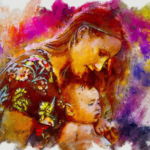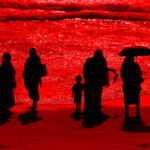Last month I found myself composing a project proposal on British Muslim women and their new identities. I was shortlisted for the project and called in for an interview. The proposal outlined the emergence of British Muslim women with new Muslim identities in public and political spheres. These spheres include media, educational domains, occupational sectors, policymaking, faith-based and political movements and online platforms in the UK.
Existing research on this context claims that Muslim women in Britain are withdrawn from mainstream Britain because they live in ghettoised ethnic territories and politically organise themselves via ethnically and religiously homogenous networks. Also, research has found that Muslim women face everyday microaggressions, hate crimes and alienation, but little is known about how they negotiate this and their identities and manage to create counter-narratives.
I tried to address this gap through the proposed research by exploring the British Muslim women and their alternative narratives and their activism in sectors in education, healthcare and political institutes, social foundations and public organisations.
It is interesting to look deeply into how British Muslim women are interpreting Islam from new angles and discover new identities within.
The research is crucial and timely because of many reasons. In their pathbreaking report published in 1997, Islamophobia: A Challenge for Us All, examined the growth, features and consequences of anti-Muslim racism in Britain. The report warned then about the dangers of ‘closed’ views of Islam and Muslims and pressured for a more ‘open’ perspective and dialogue, not only as a way of countering anti-Muslim racism but as a necessity ‘for the well-being of society as a whole’. (Alexander, Redclift, & Hussain, 2013)
The wearing of the veil has come under much media, political and public scrutiny in the UK and elsewhere in the West after the terrorist attacks of 9/11 and 7/7.
Broadly speaking, the female Muslim dress is seen as a symbol of gender oppression and the patriarchal power of religion. As such, veiled Muslim women are stereotypically perceived as oppressed and subjugated, while Islam is understood as a misogynist and patriarchal religion. (Zempi, 2014)
Muslim women are 65% are less likely to be employed than their white Christian counterparts of the same age, and with the qualifications (Dobson, 2014) All of this suggests that Muslim women in the UK are disproportionately experiencing widespread encounters with injustice.
Grippingly there is a cluster of Muslim Women emerging who are negotiating new Muslim identities in public and political spaces. They talk about everything under the sun. They literally deny the stories of them being stereotyped or forced into prescribed boxes, both by members of their own communities and people outside of them.
This personal agency is twofold. In common with other women, Muslim women face an ongoing struggle to create and occupy spaces within their own communities where their views and voices are heard and acknowledged.
But for Muslim women, there is an additional challenge to their expression of empowerment. This is the perception in the broader community that Muslim women are either incapable of or not permitted to be agents of their own destiny, to have a voice that can and should be heard. (Krayem, 2018)
In my thesis, my main aim was to develop a rich and detailed understanding of British-Muslim Women’s emerging new identities and how these identities create an alternative narrative about the Muslim women’s activism across several fields.
It is clear that for Muslim women, there are intensified sensitivities around dress and appearance underpinned by misconceptions and stereotypes around their decision to wear Islamic clothing.
However, there is a new generation of Muslim women have begun to emerge from Britain with new identities. They are engaged in an entirely new perspective about faith, religion and activism. They carry out discourses without compromising their religious integrity.
A common feature of these initiatives and so many other examples like them is that they appeal to young people in ways that the task of formal Muslim communal representation during the 1990s never did. These young activists refuse to engage politically as ‘good immigrants.’ Rather, they seek to tell their own stories with all their nuance and complexity. They aim to contribute directly to society rather than to appeal to the political establishment, responding to inequalities they see and experience as Muslims of Britain, but not as Muslims beholden to Britain. In the words of the poet Suhaiymah Manzoor-Khan, they ‘refuse to be respectable.’ (Elshayyal, 2018)
In geopolitical events post 9/11, adoption of the term ‘Muslim women’, especially by younger generations, has grown in the act of supra-national identification with the Muslima – Muslim female community – that crosses race, ethnicity, sects and class. This is reflective of wider prioritisation of religion in the construction of personal identity by ethnic minorities and in particular by Muslims, understood as a response to unfair treatment, stigmatisation, and higher levels of social and economic exclusion (Mcghee, 2008) (Khattab, 2009)
Since the turn of the twenty-first century, there has been a rapidly expanding field of Muslim lifestyle media. Within the sub-genre, especially prominent, are Muslim women producing content for other Muslim women. Muslim women bloggers, or so-called ‘hijabi bloggers’, are attracting large global followings, and thus interest from business and mainstream media. Muslim women bloggers are optimising their reach by working across multiple media platforms. (S.Warren, 2018)
Beyond fashion and beauty, Muslim women in lifestyle media are also discussing with their audiences more overtly political topics such as honour killing, female genital mutilation, and, the politics of Muslim identity and activism in Western-liberal states. Notably, an educated and upwardly mobile demographic are leading this new digital media, including social media platforms of vlogging, blogging, and micro-blogging. (S.Warren, 2018)
Rebecca Solnit, (Solnit, 2014) writes: “Every woman who appears wrestles with the forces that would have her disappear. She struggles with the forces that would tell her story for her, or write her out of the story … (T)he ability to tell your own story, in words or images, is already a victory, already a revolt.” While Solnit makes this declaration about the struggle of women at large, it is a statement that resonates in a different and very personal way for many Muslim women.
All too rarely are Muslim women acknowledged as living breathing beings, with real voices of our own.
Voices that are often raised but rarely heard, let alone listened to. For many Muslim women, to be the understudy in your own story, to be relegated to the wings of life’s stage while others say your lines for you, is our reality.
Because everyone is an expert when it comes to Muslim women. An older male politician arguing for a ban on the dress of Muslim women because they need to be saved. A journalist who has barely had a conversation with a Muslim woman but writes that Muslim women are oppressed. The only qualification needed to be an expert is an opinion that you are willing to share. In contrast, any Muslim woman who dares to suggest that she is empowered by her faith is characterised as being complicit in the oppression of women.
Obviously, Muslim women are not above criticism or immune from public commentary. However, we should not be reduced to merely being a character in a story told by others about us. We should be the writers and narrators of our own stories. (Krayem, 2018)
Thus there is an intense need for looking into British Muslim Women’s stories with a new perspective.
Said, E. W. (1978). Orientalism. New York: Pantheon Books. Afshar, H. (2012). The politics of fear: what does it mean to those who are otherized and feared? Ethnic and Racial Studies. Alexander, C., Redclift, V., & Hussain, A. (2013). The New Muslims. London: Runnymede. Borda, O. F. (2001). Participatory (Action) Research in Social Theory: Origins and Challenges’ in Bradbury H and Reason P 2001 Handbook of action research: participative inquiry and practice Sage Publications. London: Sage Publications. Dobson, R. (2014, November 30). British Muslims face worst job discrimination of any minority group, according to research. Retrieved from Independant: https://www.independent.co.uk/news/uk/home-news/british-muslims-face-worst-job-discrimination-of-any-minority-group-9893211.html# Elshayyal, K. (2018). Muslim Identity Politics: Islam, Activism and Equality in Britain. New York: I.B.Tauris. François, M. (2017, June 4). Theresa May’s talk about British values puts all Muslims under suspicion. Retrieved from The Guardian: https://www.theguardian.com/commentisfree/2017/jun/04/theresa-may-british-values-muslims-terror-threat Khan, F. (2016). Negotiating British-Muslim Identity: Hybridity, Exclusion and Resistance. Liverpool: University of Liverpool. Khattab, N. (2009). Ethno-religious Background as a Determinant of Educational and Occupational Attainment in Britain. Sage Articles. Krayem, G. (2018, February 23). Opinion. Retrieved from The Guardian: https://www.theguardian.com/commentisfree/2018/feb/23/as-muslim-women-we-dont-need-you-to-speak-for-us-and-we-dont-need-to-be-saved Kundani, A. (2009). Spooked; How To Prevent Violent Extremism. London: Institute of Race Relations. Mcghee, D. (2008). The End Of Multiculturalism? Terrorism, Integration And Human Rights: Terrorism, Integration and Human Rights. New York: Open University Press. S.Warren. (2018). Placing faith in creative labour: Muslim women and digital media work in Britain. Geoforum, 1. Solnit, R. (2014). Men Explain Things to Me. Chicago: Haymarket Books. Yoosuf Ali, S. (2018, July 25). Editors Note. Retrieved from FemAsia Magazine: http://femasiamagazine.com/thousand-and-one-nights-and-a-single-story-editors-note/ Zempi, E.-C. (2014). Unveiling Islamophia: The Victimisation of Veiled Muslim Women.



